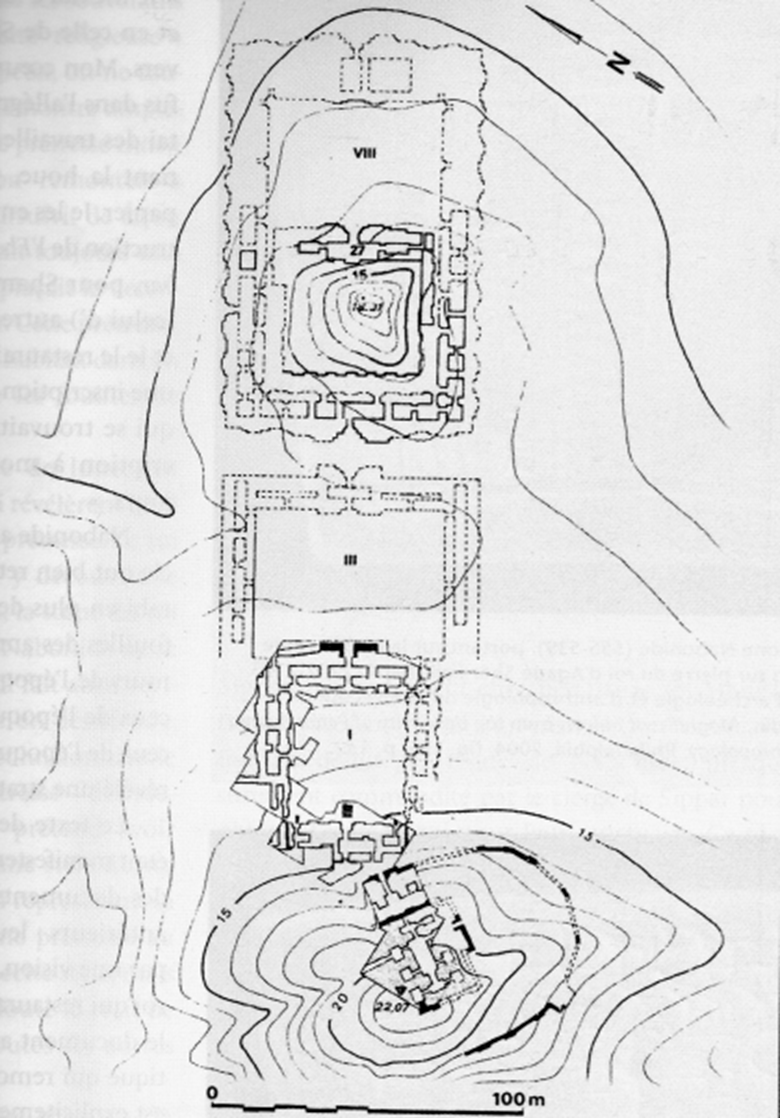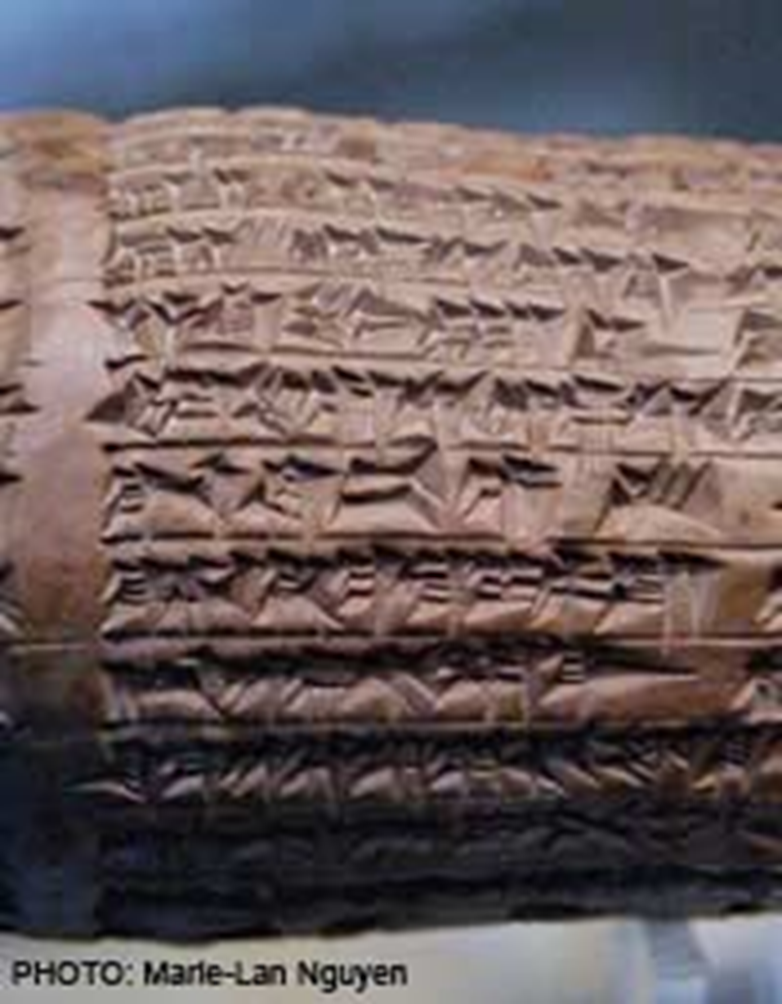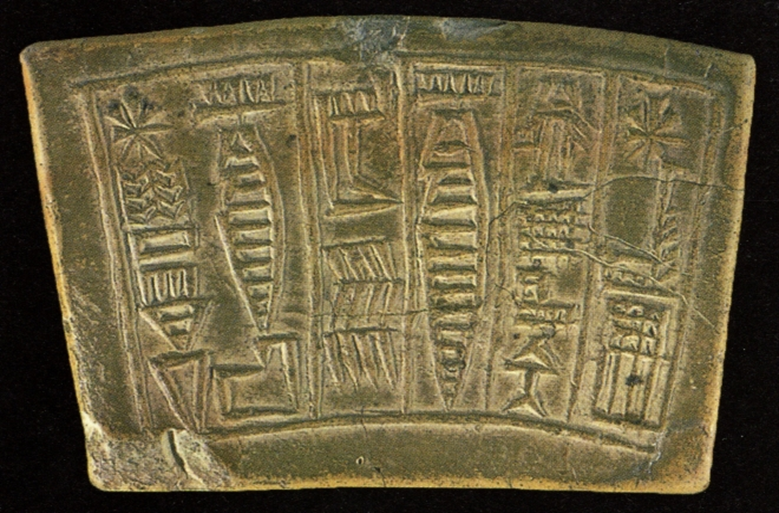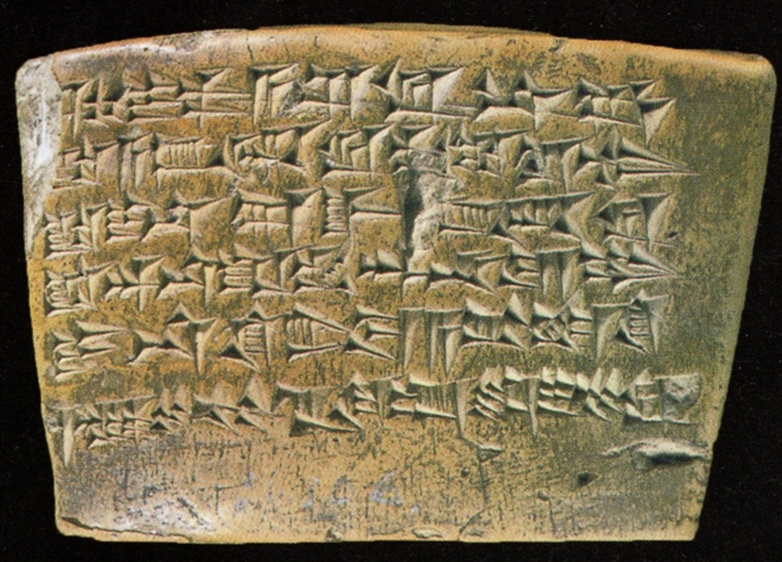King Nabonidus' archaeological excavations

When I spoke one evening years ago, about the Babylonian King Nabonidus carrying out archaeological excavations in the sixth century BC, that is, about 2,500 years ago from our time, those present were astonished and at first thought that I was joking with them. Is it reasonable for archaeological excavations to be carried out in that ancient period?
However, in the sixth century BC, the Babylonian king Nabonidus carried out archaeological excavations in search of traces of the past and a desire to revive some ancient traditions. The hand that had been neglected and disappeared for many centuries.
King Nabonidus:

History books mention Nabonidus (Nabo-na-ed, meaning the god Nebo has pity on him) as the last king of the last independent kingdom of Mesopotamia. D. He ruled from the year 556 to the year 539 BC, in which Babylon fell under the attacks of the Persian king Cyrus the Great. It ended with the fall of Babylon and the fall of its king Nabonidus, more than three thousand years after the civilizations of ancient Iraq.
Although history books do not go into detail about the period of Nabonidus’ rule, especially about his ten-year stay in the Taima Oasis, in the north of the Arabian Peninsula. However, we rarely find a chapter in it devoted to the archaeological excavations carried out by (1).
Nabonidus’ restorations of ancient temples:
King Nabonidus, like some of his predecessors, restored many temples and rebuilt those whose walls had fallen, but he tried More than his predecessors did, he found temples that had been destroyed long ago, to remove the dust from them, to find their foundations, and to search for the texts that he had recorded. Looks like the past when they built or renovated it, Which they buried in the foundations. This is to know its history and to revive ancient traditions that had fallen into oblivion.
His goal was to know the ancient history of the buildings so that he could reconstruct them as close as possible to their origins, and his project was to revive the heritage of the past. Just like the explorers of our time do.
For example, when he restored the temple of Ai-Ulmash in the city of Sippar (Tell Abu Habba), he mentioned that in the depths of his excavations he had reached the layer of the Akkad period, that is, to the third century. The twenty-second and twenty-second BC: “The bricks were placed on the foundations of Naram-e-Sin ibn Sargon exactly as they were, from However, I do not deviate from it, even by the width of one finger.”
The British Museum in London keeps a cylindrical text found in the remains of the temple of the sun god: “Shamash” in the city of Sippar, in which the Nabonidus tells you about his rebuilding of the temple of the god Sin in Harran and the temple of Sippar:

The most detailed text of his approach to excavations was written (or recorded by his scribes) about the ancient city of Larsa (the site of Tel Sankara). Nebuchadnezzar II (who ruled from 604 to 562 BC) restored the temple of Ai-Babar, the most important temple of this city, dedicated to the god Shem. Sh.
King Nabonidus restored it several decades later, and wrote:
“And in Aybar, the favorite shrine of Shamash, which had been neglected for a long time and turned into ruins, on which sand and broken bricks and stones had piled up until they collapsed.” Traces of its foundations have crumbled and been lost. In the time of one of my ancestors, Nebuchadnezzar son of Nabopolassar, the dust and sand that covered the city and the temple were removed. [Nebuchadnezzar] saw the founding tablet that had been recorded by an ancient king: Burna Burias. Despite his excavations, he did not manage to find a founding text older than that of Purna Buriyash...”
The French excavations that began in 1932 at the site of the city of Larsa showed the importance of the achievements of King Purna Buriyas in the fifteenth century BC. Birth during the restoration of the Temple of Ai Babar. The excavators found the founding text of Nebuchadnezzar II, but they did not find any mention of King Burna Burias in it. All he mentioned was that he had found an ancient founding text (2).
We do not know whether Nebuchadnezzar II had placed more than one foundation tablet, and the excavators found a tablet different from the one that King Nabonidus had found. Or did he find the same tablet and leave it in its place, but he began it in the text that he recorded, adding what he himself had found in it? His fossils.
King Nabonidus continues: “The god Shamash gave an order to me, Nabonidus, the king charged with taking care of his temple, Babar, to rebuild it as If it was in the past, it is his place close to his heart. Marduk, the supreme god, commanded the winds to blow from the four corners, and they blew and blew the sand that covered the temple and the city...”
King Nabonidus' excavations extended over a wide area of the city: from the temple to the ziggurat. In the following plan we see the temple at the bottom and the ziggurat at the top:

He wrote in his text: “And I saw a founding tablet in the name of Hammurabi, an ancient king who ruled 700 years before King Burna Burash. He had restored to Shamash his temple, i.e., Babbar and the ziggurat, and built them on their original foundations […] I raised my arms to the sky and directed my supplication to the Lord of lords: “O my Lord, O Marduk, the He who guides the gods in their journey, and without whom no one would have built a house or laid its foundations. If it weren’t for you, who would do anything?” “I went to examine the temples of Shamash, Adad, and Nirgal in order to rebuild this temple.”
?Where did King Nabonidus' knowledge of the past come from
King Nabonidus’s knowledge of the past came from the “royal lists” that classified the royal dynasties in all the countries of South Mesopotamia, and mentioned the name of Its kings according to their chronology.
He applied this information in his excavations to discover as much of the past as possible. It went deeper into the ground, layer after layer. He knew that Hammurabi preceded Burna Burash by several centuries. He extended the time gap that separated them to seven centuries, although historians in our days count it as only three centuries.
We now return to the text in which King Nabonidus narrates his rebuilding of the Temple of Ai-Babar in the city of Larsa. After he directed his supplication to the god Marduk, as we have seen, he directed it to the two gods Shamash and Adad, who specialize in divining the unseen. Their priests found that the time was right to begin his project:
“And I put my trust in Marduk, my Lord, and in Shamash and Adad, my lords of the universe. My heart rejoiced, my heart rejoiced, and I was filled with love that radiated and illuminated my face. I hired workers for Shamash and Marduk, who came with shovels and shovels, carrying baskets. And I sent them in droves to rebuild E-Babar, the majestic temple […] And for my lords Shamash and Ea and the other gods, I rebuilt E-Babar completely as It was once upon a time. I found a stone tablet with an inscription bearing the name of Hammurabi, an ancient king. Then I put it back in its place and placed next to it a tablet with an inscription with my name on it, so that they would remain in the foundations forever.”
There is no doubt that the dear reader has noticed that the most important thing that King Nabonidus wanted was to find traces of the past, that is, the “Temnu” tablets, the founding texts that The kings of ancient times left it. He mentions that the gods used to reveal their locations to him through what he saw in a dream or through the soothsayers revealing them.
The king who intended to rebuild a temple had to begin by finding its foundations to see its original plan. The belief was widespread that the god Enlil drew a brain The ideal temple was laid out at the beginning of creation, and no human being can deviate from its implementation “even by the width of a finger.” Then, when the king rebuilt a destroyed temple, he had to place a tablet inscribed with his name next to the tablets of the kings of the past who preceded him. This custom began in the eighteenth century BC, that is, about 1200 years before the time of King Nabonidus.
As the dear reader noticed, King Nabonidus was not the first to dig deep into the foundations to find the building plan before he began to rebuild it, and he himself He did not claim that, but he stated that he continued searching for what his predecessors had not been able to find.
He mentions, for example, how one of his predecessors, Nebuchadnezzar II, restored the Temple of Shamash in the city of Sippar without exerting himself in searching for a completion. Ninawat, which had been laid by the kings of the past in its foundations, which is why his temple collapsed after a few years. This was a sign of the wrath of the gods, because Nebuchadnezzar II did not respect the custom that was being followed.

When King Nabonidus set about rebuilding the same temple, he first carried out deep excavations that brought it down to eight meters below the ground, to the foundations he had laid. Aram Sin about two thousand years before him.
There is no doubt that among the most important motives of King Nabonidus for carrying out his excavations was his desire to respect religious rituals and please the gods. But the most important of his other motives was his desire to discover the uses used in the distant past and to revive his traditions that had been neglected and disappeared.
It was found, for example, that the kings of Akkad, since Sargon II in the third millennium BC, installed “entum,” meaning a female chief, over the clergy in the city of Ur.
Entum:
I pause here for a moment to remind the dear reader that the translation of the word “entum” as “priestess” lacks accuracy. The priest speculates about the unseen, and the cleric performs religious rituals or supervises their implementation. We do not have in the Arabic language a word that denotes a woman who supervises the conduct of religious rituals and heads the clergy, so I preferred to use the word Akkadian.
What is important is that this high rank was reserved, in the time of the Akkadian dynasty, for the daughters of kings. After the king died, his daughter would leave her position to the daughter of the king who ascended the throne after him. The Entum was dedicated to the moon god, whose name in the Sumerian language was “Nanna” and whose name became “Sen” in the Akkadian language. She lives in a special side of the temple called Al-Igbar. (3)
Enhedwanah:
The first of the Entums, the goddesses of religion, and the most famous of them, without a doubt, was Enheduanna, the daughter of King Sargon of Akkad, in the third millennium BC. Enheduanna deserves to be mentioned and re-mentioned, as she was the first to write literary texts that have reached us as she wrote them, and to have her name mentioned on them. No literary texts have reached us in their original versions before in all the history of mankind!
Excavators found six poems written by her in the Sumerian language, which had retained its sacred character as the language of religion even in The time of the Akkadians. They also found several works by her in which she collected ritual songs.
A circular sculpture made of calcite, 10 cm in diameter, was found in Ur. It dates back to approximately between 2300 and 2275 BC. It depicts an entum. End Duana, daughter of King Sargon of Akkad, performing religious rituals. While the cleric was carrying out the ritual ceremonies, standing in front of an altar near a ziggurat that we see on the left of the sculpture, Enheduanna stood behind him, raising With her hands in front of her face, she prays to the god Nana, assisted in this by two servants whom we see behind her:

On the back of the sculpture we read an inscription: “Entum, wife of the god Nanna,” then “Daughter of Sargon, King of the Universe.”
This sculpture is kept by the Philadelphia Museum in the United States of America.
Museum of Archaeology and Anthropology, Philadelphia, U.S.A
The tradition of the rule of the Entoms over religious life lasted for five long centuries, after which it was neglected and fell into oblivion.
Daughter of King Nabonidus:
And we return again to King Nabonidus. When a lunar eclipse occurred during the years of his rule, he considered it a sign sent to him by the gods, so he asked the priests to interpret it for him. The priests explained to him its meaning: that King Nabonidus would dedicate his daughter to the temple of the god Nanna in Ur, so that she would occupy the position of entum, just as God did. Sargon of Akkad reigned about two thousand years before him.
This means that King Nabonidus had searched for these traditions that had disappeared many centuries ago, and had read about them in texts that were written about them at the time. Sargon of Akkad or whoever came after him!
What is important is that King Nabonidus carried out excavations in the Temple of Nana in Ur to find its history from the foundation slabs laid by the ancient kings. He reconstructed it and built the igbar in it, which was the side for the entum’s residence in the temple (3). After dedicating his daughter to the service of the god Nana Kantum, he chose for her a new name that befits her position: “Nigaldi Nana,” which means “The entum that the god Nanna desires.”
King Nabonidus wrote that he knew how to dress his daughter in the entum dress [at her inauguration ceremony] from his reading of what was stated in the monument placed by King Nebuchadnehne. Serr I, who ruled in the twelfth century BC, that is, six centuries before him, depicted his daughter wearing the clothes of an entum after She was consecrated to serve in the Nana Temple in Ur. Archaeological excavations at the beginning of the twentieth century did not find this monument.
King Nabonidus excavates the palaces:
King Nabonidus's excavations were not limited to the temples. The best example of this is what he mentioned about his excavations in the royal palace in the city of Akkad, the capital of the Akkadian state founded by King Sargon of Akkad in the 1000s. -Third BC. Excavators have not yet found traces of the city of Akkad, and they still do not know its exact location.
We have further evidence of King Nabonidus’ excavations in the city of Akkad. He found a tablet written by Nebuzerlesher, and printed on a Apply an old text on both sides by pressing on the wet clay. We read in the ancient text that was printed on clay: “Shar-Kali-Shar, king of the subjects of the god Enlil.” We know that Shar-Kali-Shari was a king of the Akkadian dynasty, who ruled from about 2267 to about 2193 BC:

The writer commented on this text on the back of the tablet: “An impression of the tablet made of diorite rock found in the foundations of Naram-Sin’s palace in the city of Akkad, which the writer Nebuzer saw.” “Lesher”:

The tablet is preserved in the Philadelphia Museum in the United States of America.
Museum of Archaeology and Anthropology, Philadelphia, U.S.A.
Excavators found in the remains of the Ibabar temple in the city of Sippar a statue of Sargon of Akkad, some of its parts broken. King Nabonidus mentioned in one of his texts that he had found a statue of Sargon of Akkad, restored it, then placed it inside the temple, and was offering it vows of peace. Date. Some administrative tablets confirmed what King Nabonidus mentioned, which indicates his strong respect for the past time and his reverence for everyone who belongs to it.
(1)
Beaulieu (P.-A.), The Reign of Nabonidus King of Babylon 556-539 B.C, New Haven & London, 1989
Schaudig (H.), Nabonid, the “Archaeologist on the Königthorn”, Münster 2003
Charpin (D.), Nabonide, the archaeologist king, Archeology files, Nov.-Dec.2011
(2) There is no doubt that the French archaeologist André Parrot, who supervised the excavations, believed that he was the first to excavate the site, and he did not imagine that King Naboni He had preceded him in doing so by more than 2,500 years!
(3) In his excavations in Ur at the beginning of the twentieth century, Leonard Woolley found the temple of Nanna. He also believed that he was the first to excavate the site, and he did not imagine that King Nabonidus had preceded him to do so by more than 2,500 years!

